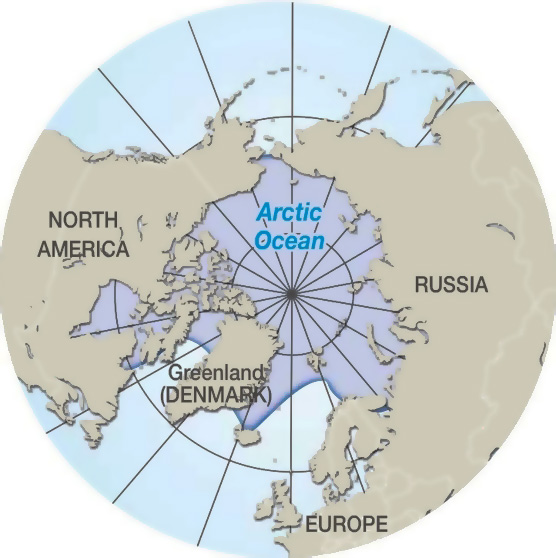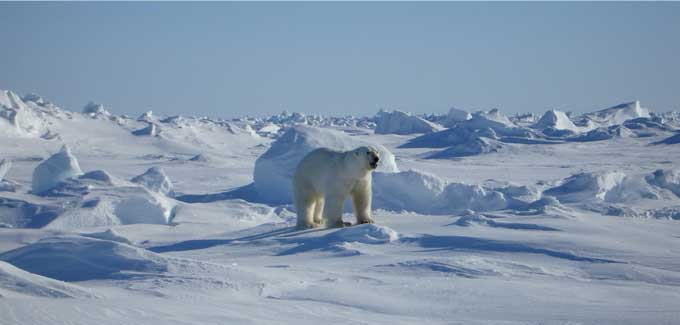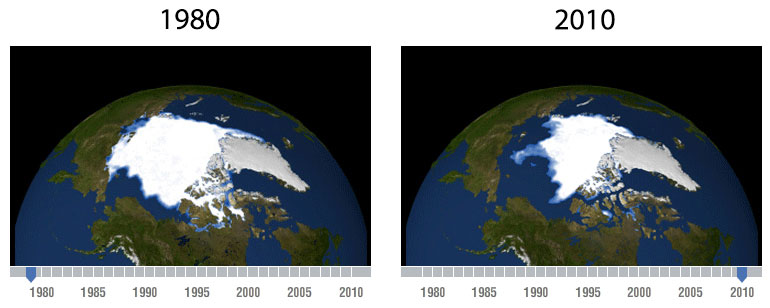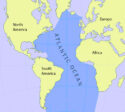 The Arctic Ocean is the smallest and most frozen Ocean on the Earth. It is entirely frozen in winter and melts partially in the summer months. Earth’s geographic and magnetic North Pole also lies in this Ocean. The Arctic Ocean’s name is derived from the Greek word “Arktos” which means bear. The reason for giving that name is because polar bears live in this region.
The Arctic Ocean is the smallest and most frozen Ocean on the Earth. It is entirely frozen in winter and melts partially in the summer months. Earth’s geographic and magnetic North Pole also lies in this Ocean. The Arctic Ocean’s name is derived from the Greek word “Arktos” which means bear. The reason for giving that name is because polar bears live in this region.
The Arctic Ocean covers only 4% of Earth’s surface and it is about 1.5 times the size of the USA, or 80% the size of Russia. It is bounded by Europe, Asia, and North America. The Arctic Ocean is the shallowest ocean among the five major oceans at an average depth of 1 kilometer. However, the deepest place in the Arctic Ocean is about 5.5 kilometers deep and is called “Molloy Hole”
Characteristics
Temperature
The Arctic Ocean is the coldest among the five major oceans and is completely frozen in the winter months. During the summer months, layers of ice melt down completely in some regions and ocean water becomes visible. Moreover, ice from the glaciers and ice shelves also shrinks in summer. The melting of ice makes the ocean surface texture darker which increases sunlight absorption.
Salinity
The Arctic Ocean is the least saline ocean due to several reasons and its salinity also varies significantly according to the season. The main cause of lower salinity is lower evaporation and a high inflow of freshwater rivers from glaciers. The salinity becomes even low in summer due to the heavy melting of glaciers.
Who Lives on the Arctic Ocean?

The Arctic Ocean’s surface is frozen and consists of massive glaciers. There is a variety of animals that live on the surface of the Arctic Ocean and also underwater. Some of the famous animals are polar bears, walrus, Dall sheep, seals, moose, caribou, beluga whale, and arctic wolf.
The Arctic Ocean is bounded by several countries, some of which are the USA, Canada, Greenland, Iceland, Norway, and Russia. Some regions of these countries come inside the boundaries of the Arctic Ocean. People living in the region of the Arctic Ocean are about 4 million.
Shrinking Ice of Arctic Ocean

In the past few decades, the Arctic Ocean’s glaciers have been continuously shrinking due to an increase in average temperature. As the ice shrink, more ocean water becomes visible which reduces the reflection of the surface. As a result, more and more heat is absorbed by the dark-colored ocean which further increases heat and sped-up the ice melting. This is called the run-away effect which is majorly caused by global warming.
Interesting Facts
- B-15 Iceberg is the largest iceberg in the Arctic Ocean whose area is 11,000 sq. Km.
- The Arctic Ocean is governed by international law “The Law of the Sea Treaty” and is not controlled by any one nation.
- Researchers believe that 25% of Earth’s crude oil reserves are buried under the Arctic Ocean’s crust.


